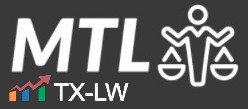Government agencies and non-profits often enter into business arrangements with private companies that, ultimately, are structured as a percentage of revenue. This approach frequently replaces traditional fixed payments like rent or management fees.
The typical example involves a building that a business owns and leases to a government agency or non-profit. The business collects a percentage of the fees or other revenues collected from the end users of the building in lieu of receiving traditional rent payments. The arrangement may also be structured as a management fee or labeled some other way.
There are also instances where the parties’ roles are switched, with the business being the tenant and the government or non-profit being the landlord. The central aspect of these arrangements is typically a type of revenue-sharing agreement. The rent or other payments may look more like business income to the business rather than rental income.
But what if the parties do not negotiate a fair deal or a deal that turns out to work economically? For example, what happens when the end users do not generate enough money to pay for the ongoing expenses of the business operationand the business advances funds to cover the shortfall? If this advancement is not paid back, is this a bad business debt and deductible as such? Or is it a capital contribution that adds to the business basis and cannot be immediately deducted?
The case of Anaheim Arena Management, LLC v. Commissioner, T.C. Memo. 2025-68, addresses this debt-versus-equity distinction and provides guidance on when business advances in revenue-sharing arrangements qualify for immediate tax relief.
Contents
- 1 Facts & Procedural History
- 2 What Qualifies as a Bad Debt Under Section 166?
- 3 When Must a True Debtor-Creditor Relationship Exist?
- 4 How Do Courts Distinguish Debt from Equity in Tax Cases?
- 5 Tax Conseuqnces of Debt vs. Equity
- 6 How Did the Tax Court Analyze AAM’s Advances?
- 7 The Takeaway
- 8 Watch Our Free On-Demand Webinar
Facts & Procedural History
AAM is a limited liability company that manages the Honda Center arena in Anaheim, California. It operates under an exclusive management agreement with the City of Anaheim.
The Samueli family owns AAM through a network of related entities. AAM’s management contract granted it the right to operate the arena and receive a share of residual profits. The agreement also imposed obligations to maintain the facility and cover operational shortfalls.
Between 2004 and 2015, the Honda Center consistently struggled to generate sufficient revenue to cover its expenses. The management agreement required AAM to make advances when the arena faced funding shortfalls. AAM ultimately advanced approximately $51.5 million in three categories: Operating Loans to cover day-to-day expenses, Debt Service Loans to meet bond obligations, and Capital Expenditure Loans for facility improvements.
Each advance was documented with promissory notes bearing interest at prime plus one percent. The notes designated “the Honda Center” as the borrower, even though the arena was merely a building owned by the City with no legal capacity to borrow money. Under the management agreement’s waterfall provision, AAM was to be repaid from arena revenues only if sufficient funds remained after paying higher-priority obligations.
By 2015, it became clear that the Honda Center would never generate enough revenue to repay the advances. AAM claimed a $51.5 million bad debt deduction on its 2015 partnership return. The IRS conducted an audit and disallowed the deduction. The IRS also imposed accuracy-related penalties under Section 6662. AAM petitioned the U.S. Tax Court to challenge both the deduction disallowance and the penalties.
What Qualifies as a Bad Debt Under Section 166?
The tax code provides a deduction for business bad debts under Section 166. This allows taxpayers to deduct debts that become wholly or partially worthless during the taxable year.
The deduction is based on the economic reality that businesses sometimes extend credit or make loans that cannot be collected. The idea is that the tax system should not penalize taxpayers for such legitimate business losses by having the business pay tax on all of its income, given the financial loss that it incurred.
As with every deduction, there are nuances. Section 166 has requirements that taxpayers have to satisfy to claim bad debt deductions. The main requirements is that the debt has to become worthless during the tax year. For business debts, the deduction is treated as an ordinary loss rather than a capital loss. This treatment typically provides more favorable tax treatment since ordinary losses can offset ordinary income without limitation.
The regulations under Section 166 define the scope of deductible debts–adding more explanation. Treasury Regulation Section 1.166-1(c) states that “only a bona fide debt qualifies for the purposes of section 166.” The regulation defines a bona fide debt as “a debt which arises from a debtor-creditor relationship based upon a valid and enforceable obligation to pay a fixed or determinable sum of money.”
This regulatory definition requires more than just documentation labeled as a loan or promissory note. The substance of the relationship must reflect the characteristics typically associated with arm’s length debt transactions. Based on this, the courts examine whether the parties intended to create a genuine creditor-debtor relationship or whether the advance served other business purposes.
When Must a True Debtor-Creditor Relationship Exist?
When is there a true debtor-creditor relationship? According to the courts, this relationship must be based on a valid and enforceable obligation to repay a specific amount. The obligation cannot be contingent on business success or dependent on factors beyond the borrower’s control.
A valid debtor-creditor relationship requires several elements. The debtor must have legal capacity to incur the obligation. There must be consideration for the debt–meaning the debtor received something of value in exchange for the repayment obligation. The terms must be sufficiently definite to allow enforcement through legal proceedings if necessary.
The enforceability requirement means that the creditor must have realistic legal remedies available if the debtor defaults. If the purported creditor cannot pursue collection through normal legal channels, courts may question whether a true debt relationship was intended. This is particularly problematic when the purported debtor lacks assets or legal capacity to be sued.
Courts also examine whether the parties treated the arrangement as a genuine debt relationship. If the creditor repeatedly waives payment obligations, extends maturity dates without penalty, or subordinates repayment to all other business obligations, these actions may indicate that no true debt was intended. The behavior of both parties has to be consistent with a genuine lending relationship.
How Do Courts Distinguish Debt from Equity in Tax Cases?
Federal tax law has long grappled with distinguishing debt from equity in various contexts. The characterization affects not only bad debt deductions but also interest deductibility, dividend treatment, and numerous other tax consequences. Courts have developed multi-factor tests to analyze the economic substance of purported debt relationships.
The Ninth Circuit applies an eleven-factor test to determine debt versus equity status. These factors include the names given to the instruments, the presence of a maturity date, the source of payments, the right to enforce payment, participation in management, subordination to other creditors, the parties’ intent, capitalization adequacy, identity of interest between creditor and debtor, payment of interest only from earnings, and the ability to obtain third-party financing on similar terms. As it is a factor analysis, no single factor is determinative in this analysis. Courts examine the totality of circumstances to determine whether the advance represents a genuine arm’s length debt transaction or an investment in the business.
With that said, the more an advance resembles typical commercial lending practices, the more likely it will be characterized as debt. Conversely, advances that are subordinated to other creditors, lack enforcement mechanisms, or depend entirely on business success for repayment tend to be characterized as equity investments.
This type of debt-versus-equity analysis recognizes that business owners sometimes provide funding to their enterprises that, despite formal documentation as loans, function economically as capital contributions. The tax consequences differ based on whether the arrangement is debt or equity.
Tax Conseuqnces of Debt vs. Equity
The distinction between debt and equity can result in dramatically different tax consequences for both the advancing party and the recipient.
When an advance is characterized as debt, the advancing party can potentially claim a bad debt deduction under Section 166 if the debt becomes worthless. This deduction is available in the year the debt becomes worthless. Business debts receive ordinary loss treatment. Ordinary loss treatment allows the deduction to offset ordinary income without limitation. This can provide an immediate tax benefit.
For the recipient of debt financing, interest payments are generally deductible business expenses under Section 162. The principal amount of the debt does not create taxable income when received. This is because borrowed funds must be repaid. Upon repayment, the principal amount is not deductible. This represents return of borrowed capital.
When an advance is characterized as equity, the advancing party cannot claim an immediate deduction when the investment becomes worthless. Instead, the loss is generally recognized only when the equity interest is sold, exchanged, or becomes completely worthless under Section 165. This can delay the tax benefit for quite some time.
For partnerships and limited liability companies treated as partnerships, equity contributions increase the partner’s outside basis in their partnership interest. Losses from the entity can flow through to partners, but only to the extent of their basis in the partnership. This basis limitation can prevent immediate recognition of losses even when the business fails.
When the partnership or LLC is ultimately dissolved or the partner’s interest becomes worthless, the partner may recognize a capital loss equal to their remaining basis. However, capital losses are subject to significant limitations. Individual taxpayers can only deduct $3,000 of net capital losses per year against ordinary income, with excess losses carried forward to future years.
Corporate taxpayers face even more restrictive rules for capital losses. Capital losses can only offset capital gains, with no deduction against ordinary income. Unused capital losses can be carried back three years and forward five years, but many corporations lack sufficient capital gains to absorb large capital losses.
Suffice it to say that this is an area where advance tax planning can help avoid unexpected tax liabilities.
How Did the Tax Court Analyze AAM’s Advances?
The tax court applied the eleven-factor test to AAM’s advances and found that none of the factors supported debt characterization. While the promissory notes were labeled as debt instruments, the court noted that the Honda Center had no legal capacity to borrow money. This made the notes largely ceremonial documents rather than enforceable obligations.
The court found that the maturity dates in the notes were meaningless because AAM could extend them at will and actually did so repeatedly. The source of payments was limited to arena revenues, creating uncertainty about repayment that differed from typical commercial debt. AAM had limited ability to enforce collection since repayment depended entirely on the arena’s financial performance.
Regarding management and participation, the court determined that AAM made the advances to fulfill its contractual obligations as arena manager and to preserve its profit-sharing rights. The advances were subordinated to most other arena obligations. AAM’s return included both interest payments and a share of residual profits. The court found this profit participation particularly significant in distinguishing the advances from arm’s length debt.
According to the court, the parties’ intent analysis revealed that the advances served AAM’s broader business interests rather than representing pure lending transactions. AAM needed to maintain the arena’s operations to preserve its lucrative management contract and profit-sharing arrangement. The court concluded that AAM made the advances as equity-like investments in the arena business rather than as a disinterested creditor seeking fixed returns.
The Takeaway
This decision explains the risks one takes in revenue-sharing arrangements and in advancing funds to cover operational shortfalls. Courts will look beyond formal loan documentation to examine the economic substance of these advances, particularly when the advancing party has contractual obligations to provide funding or receives profit participation beyond fixed interest rates. The case shows that advances made to preserve existing business interests or management rights could to be characterized as equity investments rather than deductible debt. This characterization can transform what appears to be an immediate ordinary loss deduction into a capital contribution that provides no immediate tax benefit and may only be recoverable as a limited capital loss upon disposition of the business interest.
Watch Our Free On-Demand Webinar
In 40 minutes, we'll teach you how to survive an IRS audit.
We'll explain how the IRS conducts audits and how to manage and close the audit.


